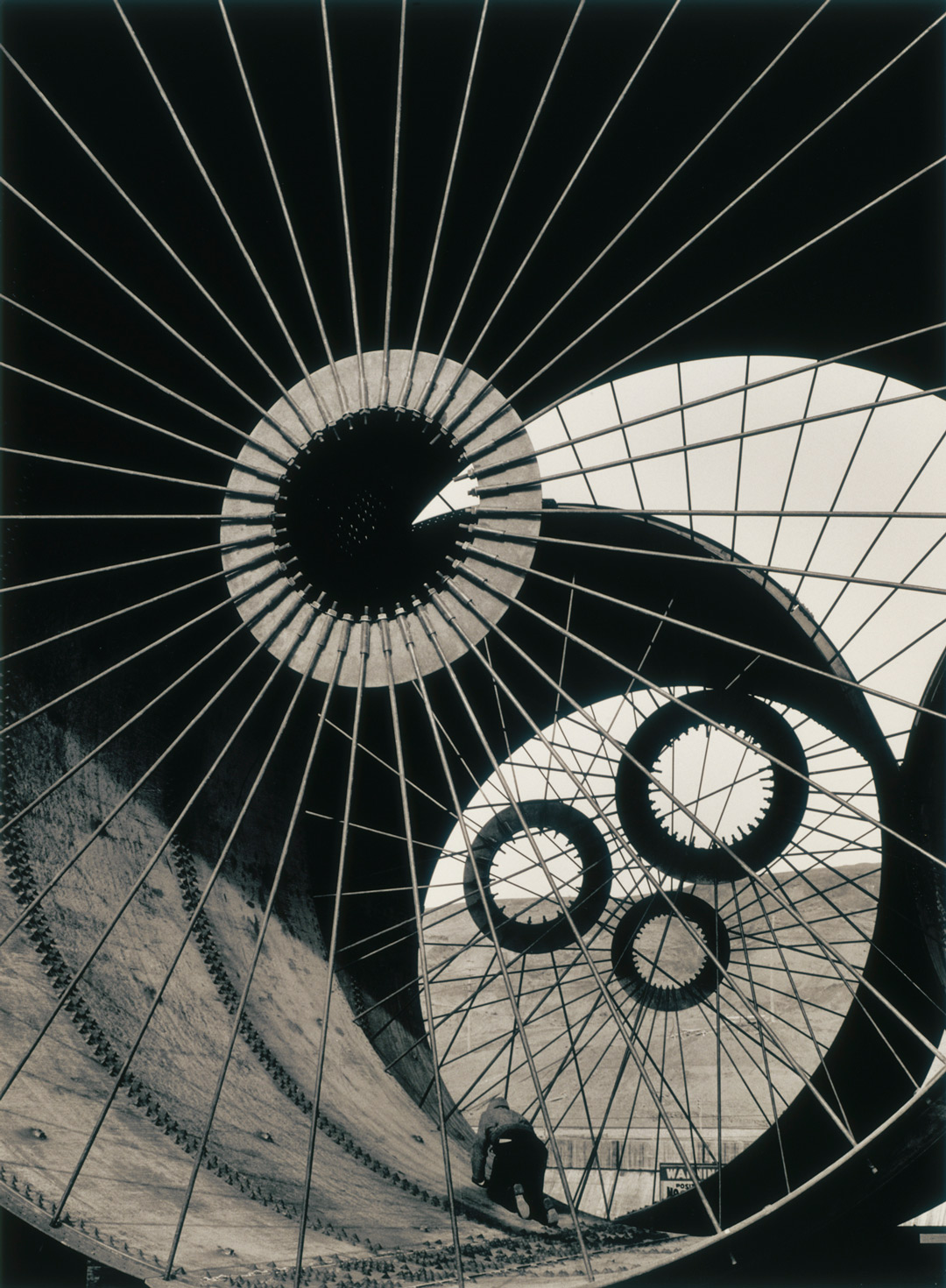Object of the Week: Diversion Tunnel Construction

Viewers of this photograph, Diversion Tunnel Construction, Fort Peck Dam, Montana, 1936, by Margaret Bourke-White (American, 1904–1971) will likely appreciate the machine-age composition, the eccentric geometric design, and the surprising beauty evoked in a steel liner. For this Labor Day edition of Object of the Week, however, I’d like to look more closely at the worker, crouched down, performing his labor and appreciate Bourke-White’s first associations with social documentary photography.
Bourke-White began her career in the 1920s and quickly became recognized for her images capturing machines, factories, and commodities of the industrial age. She was working on corporate commissions when the great financial collapse of the late 1920s and early 1930s began to alter profoundly the American economic landscape. Subsequently, she began turning her focus from symbols of industry to human subjects directly affected by the Great Depression.¹
Bourke-White became a staff photographer for the new Life magazine in 1936 and photographing the construction of the Fort Peck Dam in northeast Montana was her first assignment. The Fort Peck Dam was part of President Franklin Delano Roosevelt’s New Deal program that responded to the devastating poverty and unemployment of the day.
Life reported: “The dam is intended to give work to Montana’s unemployed and incidentally to promote carriage of commerce on the Missouri [River]… It has paid wages to as many as 10,000 veterans, parched farmers and plain unemployed parents…”² The Army Corps of Engineers, ultimately responsible for the dam’s construction, estimated the number of workers to be even higher.³
Historian, Rafe Sigmundstad, describes the construction of the dam’s diversion tunnels—of which the steel liner shown in Bourke-White’s photograph is a part—giving us a sense of the dangerous work needed to complete the complicated dam structure.
“The Missouri River flows through four diversion tunnels running under the east abutment of the Fort Peck Dam. How they got there is quite a story. Gangs of workers took turns cutting into the shale with coal saws that would pivot about an axis to make a 15-foot cut. Then the material was blasted out of the tunnel, scooped into railcars and removed while more digging commenced. This happened day in and day out. Three shifts totaling 4,000 men worked on the tunnels day and night, removing about 5 million cubic yards of material to make way for the tunnels. Residents grew used to the constant noise of the blasting. Serious landslides occurred during the excavation, due to bentonite fault seams in the bedrock. The bedrock itself, known as bearpaw shale, was extremely high in water volume and some 300 yards thick.”4
In addition to the construction photos, Bourke-White documented the people and the newly constructed Fort Peck City built by the Army engineers to house the workers on the dam. The city was built to house the workers, not their families. For additional housing, rent was charged which left the married worker without enough money to house the family elsewhere. Consequently, workers with families moved farther afield into self-constructed shanty towns.5
When the editors of Life sent Bourke-White on this assignment, what they expected were the construction photos that only Margaret Bourke-White could take, but what they got was a human document of American frontier life.6 On this Labor Day, take a moment to think about the human effort that went into constructing our roads, bridges, dams, office buildings, and homes.
—Traci Timmons, Librarian*
*This author acknowledges the negative impact the Fort Peck Dam had on the Fort Peck Assiniboine and Sioux Tribes. To learn more, read The History of the Fort Peck Assiniboine and Sioux Tribes, 1800-2000 by David Reed Miller (Helena, Mont: Fort Peck Community College, 2008), p. 319-344.